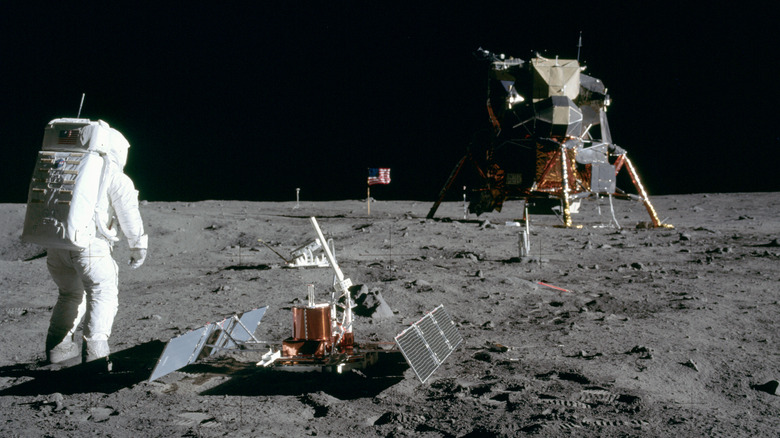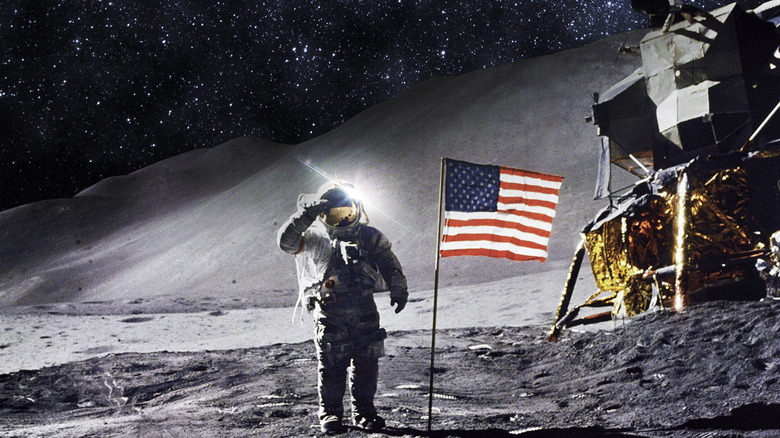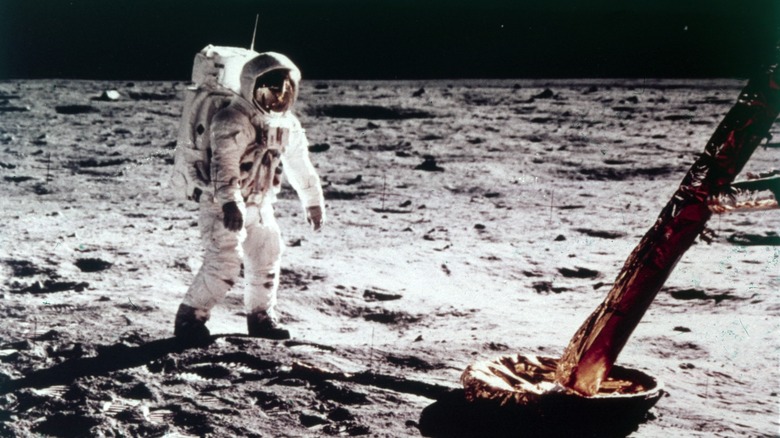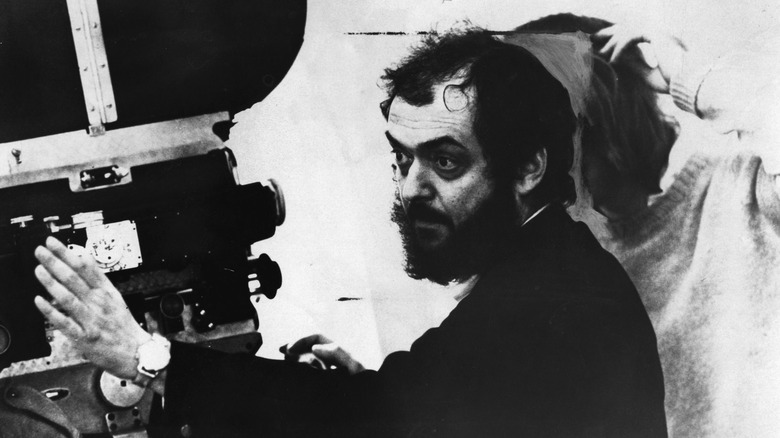Why The 'Shadows' Moon Landing Conspiracy Makes No Sense
On July 20, 1969, a pivotal moment happened for the United States and the world as Neil Armstrong became the first person to walk on the moon's surface. The Apollo 11 mission started on July 16, 1969, with its launch from Cape Kennedy bringing with it Commander Neil Armstrong, Command Module Pilot Michael Collins, and Lunar Module Pilot Edwin "Buzz" Aldrin. According to NASA, it's estimated that 650 million people watched the moon landing as those first steps were taken so far from our home planet. It was that day that Neil Armstrong declared, "... one small step for a man, one giant leap for mankind." This quote has been forever cherished and remembered by millions, and it was perfect for the momentous events of that day.
Of course, the moon landing isn't just shrouded in positivity, as there are plenty of those who believe that the whole thing was merely the United States government trying to pull the wool over the eyes of millions. Conspiracy theories surrounding man's first visit to the moon have existed for decades, and some, if not many, of them can sound pretty believable. However, one of the most prominent conspiracy theories regarding an apparent problem with the non-parallel shadows, shown in photos from the mission, has been proven time and time again to be a hoax.
People lost faith in the United States government's honesty after Watergate
Theories that the moon landing was all an elaborate show put on by the government were inevitable, though when they really began to ramp up was around the time when large-scale scandals like that of the 1972 Watergate incident took place. According to History, American citizens were trusting their government less and less, leading to more questioning surrounding events like the moon landing.
The most popular theory being that the shadows in a photograph taken by Niel Armstrong are not parallel. According to an article published in Royal Museums of Greenwich, many believe that if the sun was the only source of light available to the astronauts, the shadows should be parallel. Since the shadows are not parallel, many believe the image was a studio creation with professional lights behind Neil Armstrong.
In an article published in History, The press officer for the American Astronomical Society, Rick Fienberg, shut conspiracy theorists down when he said, "About 400,000 scientists, engineers, technologists, machinists, electricians, worked on the Apollo program. If, in fact, the main motivation for believing in the moon hoax that is you don't trust the government, you don't trust our leaders, you don't trust authority, how can you feel that 400,000 people would keep their mouths shut for 50 years? It's just implausible."
The Moon's surface illuminates the astronaut's surroundings
Rick Feinberg isn't the only one who has spoken out against the shadow conspiracy. In a quote published in the Royal Museums of Greenwich site, National Space Centre Discovery Director Profesor Anu Ojha, has also taken the time to explain why exactly this theory isn't viable. "This is on the surface of the moon, but we can reproduce this effect any time we want to on Earth," Professor Ojha explains. "You have all seen this phenomenon yourself, where, because of perspective, parallel lines appear to be non-parallel. If you are trying to reduce on to a two-dimensional plane a three-dimensional situation, you can make lines do all sorts of weird things. Artists have been using this for centuries."
The surface of the moon is also a source of illumination, as it reflects the sun's light. According to History, this is why the plaque that the astronauts left on the surface can be seen in some images and not others, even though it's left in the shadows. The appearance of the non-parallel shadows in the moon-landing photographs is just one piece of how the shadows looked during the moon landing, but conspiracy theorists will continue to be shut down time and time again by science.
There are more conspiracy theories than just the shadows being incorrect
As far as moon landing conspiracy theories go, the shadows on the moon being abnormal is actually relatively tame as there are plenty of other ideas that have been shared via word of mouth and, of course, the internet for decades. Other famous theories that have been debunked are that the moon landing is fake because you can't see the stars and that the renowned director Stanley Kubrick actually filmed the whole thing in a Hollywood studio.
According to History, Kubrick's work on his 1968 film, "2001: A Space Odyssey," was so visually compelling that conspiracy theorists began to wonder if he was the one behind the amazing footage that came from the Apollo 11 mission. This theory, too, has been debunked (via History). It seems as long as there is progress, there will be those trying to disprove it, but in the case of the 1969 moon landing, there will always be those with scientific information at the ready to defend it.



